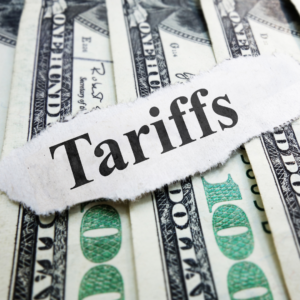The Small Business Secret For Cashflow Success
Small businesses often face the daunting challenge of limited resources, especially when it comes to cash flow. Launching a new product or service can seem like a risky and expensive endeavor. But what if there was a way to test the waters without breaking your business bank? The Minimum Viable Product (MVP) is worth discussing, as it is a lean startup strategy that can help small businesses approach product development and financial management.

Cash Flow
What is an MVP?
An MVP is the most basic version of your product or service that includes just enough features to satisfy early customers and provide valuable feedback for future development. It’s not about creating a perfect product right away; it’s about validating your idea and minimizing financial risk.
How MVPs Boost Cash Flow:
Here are a couples of ways the MVP concept can help you in your business cashflow.
- Cost Efficiency: Developing an MVP significantly reduces upfront costs compared to building a full- fledged product. This allows you to allocate your limited resources more strategically and avoid overspending on features that might not resonate with your target audience.
- Faster Time-to-Market: MVPs enable you to launch your product or service faster, generating revenue sooner rather than later. This early revenue stream can sustain your business and fuel further growth.
- Customer Validation: An MVP helps you gauge market demand and gather valuable feedback from real users. This allows you to refine your product based on actual customer needs, increasing the chances of success and reducing the risk of costly missteps.
- Attracting Investment: A successful MVP can demonstrate the potential of your product or service to investors, making it easier to secure funding for further development and expansion. This can be a game-changer for small businesses struggling to bootstrap their growth.
- Reduced Risk of Failure: By testing your idea with a minimum viable version, you reduce the risk of investing heavily in a product that might not succeed in the market. This allows you to pivot or iterate based on real-world feedback, saving you time and money in the long run.
- Sustainable growth: By starting with an MVP, you will be able to test your idea, generate some revenue, and validate your business model without taking on excessive financial risk. Her feedback from early customers guided your product development, ensuring that you were building something people truly wanted. This approach allowed you to create a sustainable business model that solved a problem for your customers , earned some cash flow, and positioned them for long-term success.
Real-World Examples
Countless small businesses and big companies today have leveraged MVPs to achieve remarkable success. For instance, Dropbox started as a simple video demo showcasing its file-sharing concept, which helped it attract early adopters and secure funding. Similarly, Zappos began by selling shoes from other retailers to test their online model before investing in their own inventory.
The MVP Mindset
Adopting the MVP approach requires a shift in mindset. It’s about embracing experimentation, learning from feedback, and iterating quickly. It requires stepping a way from perfection, but it does not mean you will neglect the quality of your products.. This approach not only improves cash flow but also fosters a culture of innovation and continuous improvement within your small business.
How Tariff Tax Affects Your Business: Strategies to Thrive Amid Changing Trade Policies
How Tariff Tax Affects Your Business: Strategies to Thrive Amid Changing Trade Policies In this episode of Become Sensible, we dive into the pressing issue of tariff tax and explore how new trade policies are impacting small businesses like yours. If rising import tariffs and changing supply chain costs are causing uncertainty, this episode provides…
Tax Checklist for Business Owners: Prepare for a Stress-Free Filing
Tax Checklist for Business Owners: Prepare for a Stress-Free Filing In this episode of Become Sensible, we break down a comprehensive tax checklist designed to help business owners streamline their tax return preparation. If the thought of organizing financial documents and optimizing tax strategies causes you anxiety, this episode provides the clarity you need Why…
Continue Reading Tax Checklist for Business Owners: Prepare for a Stress-Free Filing
Mastering Money Habits: Transform Your Financial Future
Mastering Money Habits: Transform Your Financial Future In this episode of Become Sensible, we dive deep into the transformative power of money habits and how cultivating smart financial routines can revolutionize both your personal and business finances. If you’re tired of erratic spending and ready to build a solid foundation for a prosperous future, this…
Continue Reading Mastering Money Habits: Transform Your Financial Future
Avoiding Common LLC Mistakes: Insights for Entrepreneurs
Avoiding Common LLC Mistakes: Insights for Entrepreneurs In this episode of Become Sensible, we tackle some of the most common mistakes entrepreneurs make when setting up and managing an LLC. If you’ve ever wondered how to avoid common LLC mistakes, this episode is a must-listen. Why You Need to Listen Are you: Confused about the…
Continue Reading Avoiding Common LLC Mistakes: Insights for Entrepreneurs
Proudly powered by WordPress



